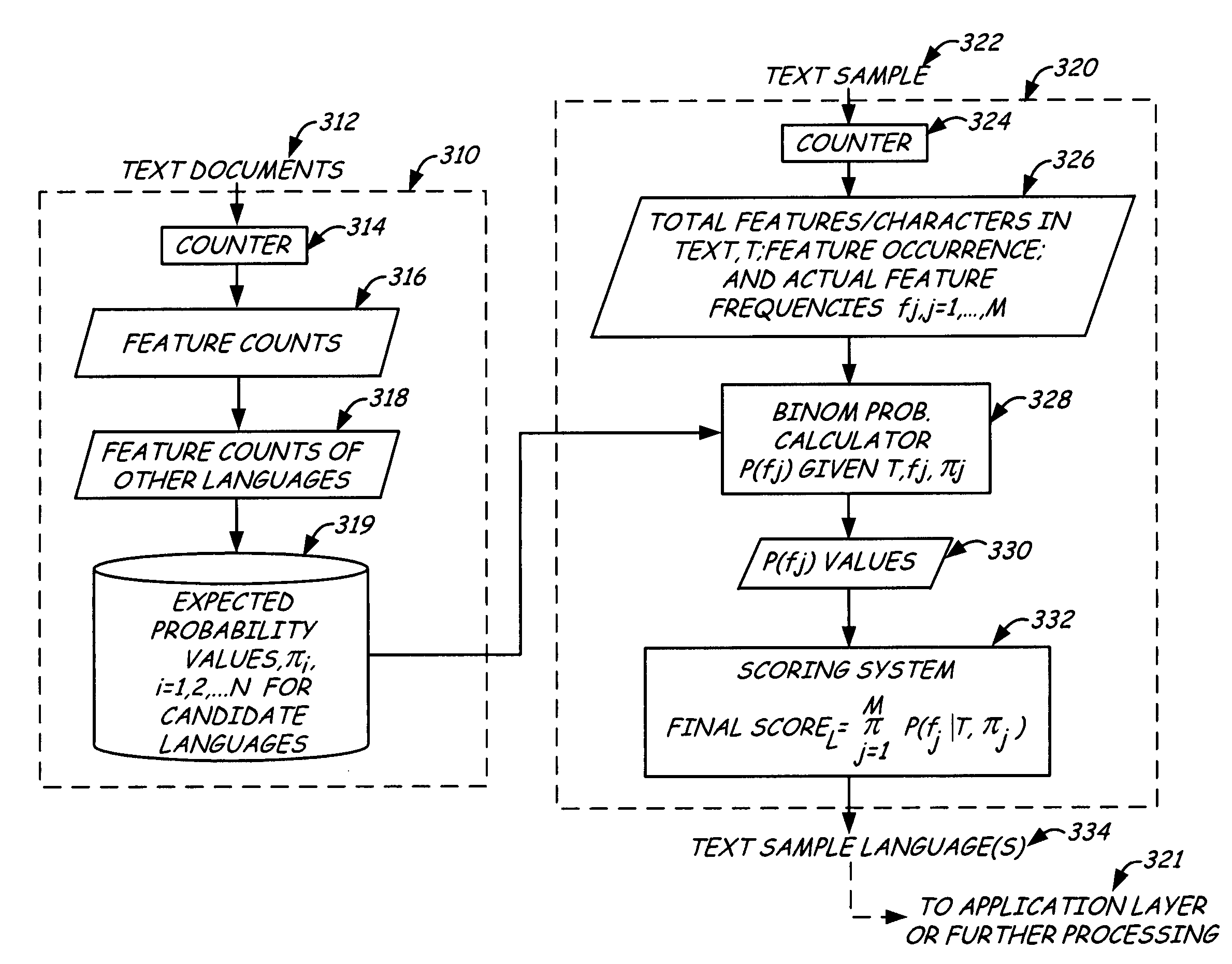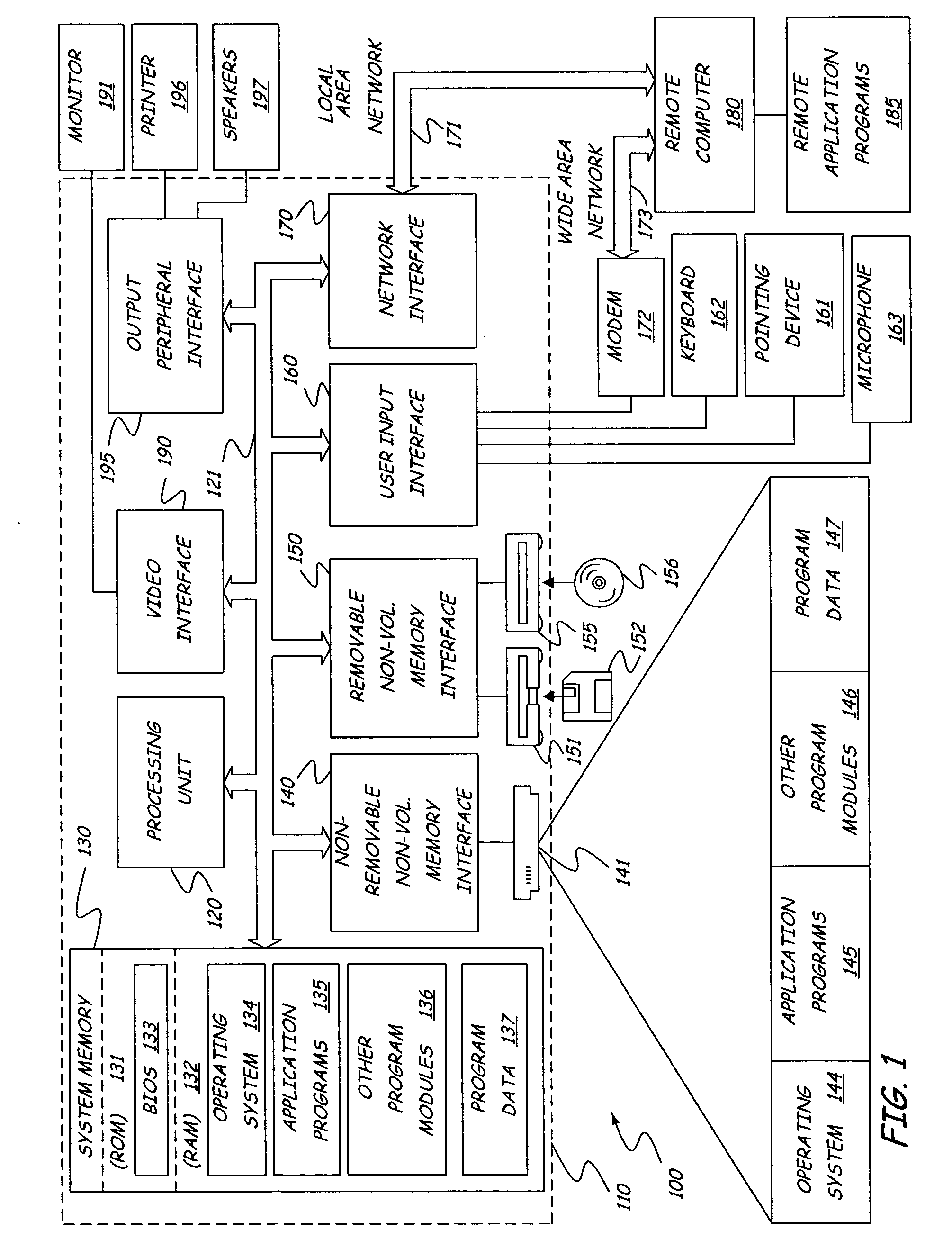Efficient language identification
a language identification and language technology, applied in the field of efficient language identification, can solve the problems of high computational cost of tri-gram methods, low efficiency of n-gram methods, and relatively slow performance, and achieve the effect of optimizing performan
- Summary
- Abstract
- Description
- Claims
- Application Information
AI Technical Summary
Benefits of technology
Problems solved by technology
Method used
Image
Examples
Embodiment Construction
[0020] The present invention relates to natural language text processing, especially identifying the natural language of input or sample text. In one aspect, language models of character probabilities found in various natural languages are constructed. In another aspect, the language models are accessed to perform language identification of natural language text. In another aspect, the present inventions can be combined with other systems or methods of identifying language, such as by analyzing character Unicode ranges or by using n-gram language identification.
Illustrative Environments
[0021]FIG. 1 illustrates an example of a suitable computing system environment 100 on which the invention may be implemented. The computing system environment 100 is only one example of a suitable computing environment and is not intended to suggest any limitation as to the scope of use or functionality of the invention. Neither should the computing environment 100 be interpreted as having any depe...
PUM
 Login to View More
Login to View More Abstract
Description
Claims
Application Information
 Login to View More
Login to View More - R&D
- Intellectual Property
- Life Sciences
- Materials
- Tech Scout
- Unparalleled Data Quality
- Higher Quality Content
- 60% Fewer Hallucinations
Browse by: Latest US Patents, China's latest patents, Technical Efficacy Thesaurus, Application Domain, Technology Topic, Popular Technical Reports.
© 2025 PatSnap. All rights reserved.Legal|Privacy policy|Modern Slavery Act Transparency Statement|Sitemap|About US| Contact US: help@patsnap.com



